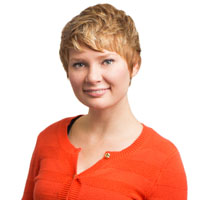Retirement
Justin King and Elliot Schreur of New America’s Asset Building Program posited a question: “Could 2015 be the year that marks a turning point for rebuilding middle-class wealth?” Two new retirement savings initiatives make them hopeful: myRA and the Illinois Secure Choice Savings Program. These programs provide an opportunity for the middle-class to develop a diversity of assets. According to King and Schreur, “Families with higher incomes have more diversified balance sheets, allowing them to take full advantage of the growth, stability, and tax advantages offered by different asset types.” The Wall Street Journal’s Josh Zumbrun also reported on stark differences in asset diversity between the wealthy and middle-class. “The very rich often live in expensive houses, but that’s not where most of their wealth is.” While approximately two-thirds of the wealth of the middle-class is tied up in their home, only 9% of the net-worth of the wealthiest 1% of Americans is in their residence.
Dan Kadlec from MONEY touted the Illinois Secure Choice program, which was signed into law on Sunday, as a potential national model for retirement savings.
Racial Wealth Gap
Ray Boshara and William Emmons of the Federal Reserve Bank of St. Louis wrote in the Washington Post on the racial wealth gap. Boshara and Emmons explored stark differences in wealth accumulation across race and ethnicity in the United States. The numbers speak for themselves: “One in three blacks has less than $1,000 in wealth (assets minus debts). For whites, it’s one in nine; Asians, one in eight; and Hispanics, one in four. At the top end of the distribution, the odds of having $1 million in wealth are one in eight for whites and one in nine for Asians but about one in 100 for those who are Hispanic or black.” Boshara and Emmons identified gaps in income, education, and financial health as potential drivers of wealth inequality. The article recommended several asset building policies to close the divide, including Children’s Savings Accounts and the expansion of retirement savings options. In The Nation Jesse A. Myerson and Mychal Denzel Smith proposed similar, but more ambitious, fixes, specifically recommending that everyone born into a wealth-poor family be “granted a trust fund at birth that would mature when the person reaches 18.”
Drug Testing
Kate Abbey-Lambertz of The Huffington Post wrote on a new Michigan law that institutes a suspicion-based, drug-testing pilot program for welfare recipients. Her coverage detailed reactions within the state, including that of American Civil Liberties Union of Michigan Executive Director Kary Moss: “While the goal may be to prevent taxpayer funds from being used for illicit purposes, these kinds of programs may instead throw families who are already in extreme distress and poverty into even worse shape, harming children who the state should help protect. Drug testing is also very costly, rife with false positives, and not a proven deterrent to drug use. What it will reveal is that the resources are not in place to help those with drug problems.” In December, Gilda Jacobs of the Michigan League for Public Policy urged Snyder to veto the legislation: "While these bills talk about adults, as you know, the majority of those benefiting from cash assistance are children. Cutting off heat and the ability to pay rent will destabilize the households, leading to the breakup of families, an event that’s particularly damaging to children.” CLASP’s Randi Hall described drug testing public benefits applicants as illegal, ineffective, and even unconstitutional.
Quick Hits
NPR’s Scott Neuman reported that the U.S. economy added 252,000 jobs in December; Unemployment now stands at a rate of 5.6 percent.
According to Ken Dixon, “Connecticut's poorest residents pay more than 20 percent of state tax revenue, nearly twice what top earners contribute.”
